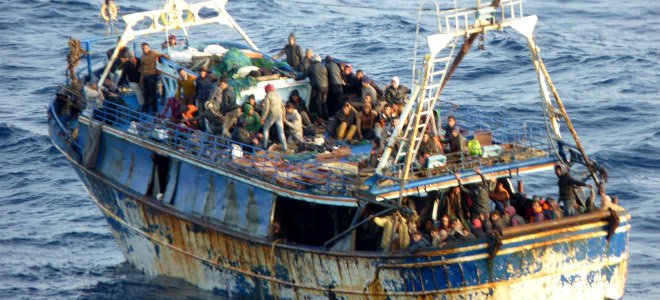The Office of the United Nations Commissioner for Refugees released a report on Wednesday that examines the route refugees take when entering Europe by sea. The report found that so far in 2015 Greece has surpassed Italy as the country with the most refugees and migrants entering its borders through the Mediterranean Sea.
The report, which asserts that Europe is going through “a maritime refugee crisis of historic proportions,” notes that between January and June 2015, 137,000 refugees and migrants entered the European borders through the Mediterranean Sea. 68,000 of them have entered through Greece.
“There has been a major increase in refugees and migrants taking the ‘eastern Mediterranean route’ from Turkey to Greece. More than 85% of those arriving in Greece are from countries experiencing war and conflict, principally Syria, Afghanistan, Iraq and Somalia. From Greece, most move onward across the Balkans to western and northern Europe,” the report reads.
Over several weeks in April, 1,308 migrants and refugees attempting to enter Europe through the Mediterranean drowned or went missing. As a result of reactionary measures taken by the European Union, including tripling Frontex financing and utilizing navy vessels of various countries, the fatality and disappearance numbers have decreased significantly to 68 in May and to 12 in June, until the 29th of the month.
In 2015, 67,500 refugees and migrants have entered Italy through the Mediterranean. Though the two neighbouring countries have had almost equally many refugees entering Europe through their borders, they are not equally high asylum recipients. Greece has received 5,115 asylum applications while there have been 28,5000 in Italy so far this year.
While Greece and Italy are the most common points of entry, Germany and Sweden received 43% of the European Union’s total asylum applications. These are the two major “imbalances” the agency found in this study.
Recently, refugees travelling to the Balkans through Greece have significantly increased. In the month of June in particular, there were approximately 1,000 refugees and migrants following this route.
The agency found Greece has “systematic gaps” in its refugee reception services, is unprepared to deal with the high numbers of incoming refugees and migrants, and the islands that receive them are also being strained by the unprecedented situation.
The agency found that refugees and migrants that traverse via the Mediterranean Sea and enter through Greece come mostly from Asia. 57% were from Syria, 22% from Afghanistan and 5% from Iraq. Overall, from the total sea-travelling refugees that have entered Europe in 2015, 34% came from Syria, 12% from Afghanistan and another 12% from Eritrea.
The Syrian civil war, which began in 2011 and has cost the lives of more than 200,000 people, is a major factor for the increased influx of refugees to Greece and Europe, according to the UN.
In April, the Greek secret service estimated that around 500,000 Syrian immigrants were in Turkey with the goal of crossing over to Greece.
“In times of conflict, fences and borders will not stop people fleeing for their lives,” reads the report. “They will come. The question facing the international community is not whether to engage with this crisis, but how best to address it, and how humanely.”
See all the latest news from Greece and the world at Greekreporter.com. Contact our newsroom to report an update or send your story, photos and videos. Follow GR on Google News and subscribe here to our daily email!




